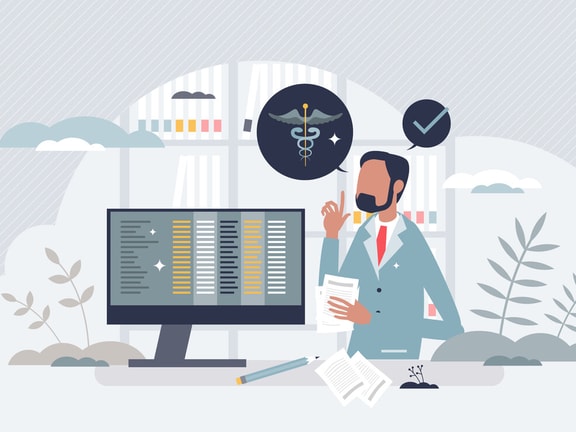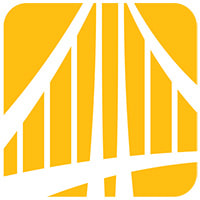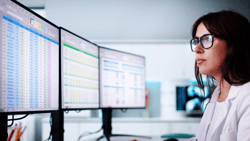Method 2 Billing: What Critical Access Hospital Leaders Need to Know
March 27, 2025
10 min. read

Method 2 billing presents a unique opportunity for hospitals designated under the Medicare Conditions of Participation as CAHs. This billing method allows the hospital to include both facility and professional services on a single institutional claim. For decision-makers seeking to improve operational efficiency, financial visibility, and staffing resource allocation, a deeper understanding of Method 2 billing is imperative.
This article outlines how Method 2 works, its implications on cost reporting, pros and cons from an administrative perspective, and what key considerations should be made before choosing or remaining with this billing method. A full PDF guide is available for download at the end for those seeking more detail and sample workflows.
Free Strategies to Expand Access in Rural Healthcare
Fill out the form to unlock your free PDF!
What Is Method 2 Billing?
Under Medicare billing rules, CAHs may elect either Method 1 or Method 2 for billing outpatient professional services provided by practitioners. Method 2 allows CAHs to bill the Medicare Administrative Contractor (MAC) for both the technical and professional components of outpatient services on a single institutional claim (Type of Bill 85X).
This is in contrast to Method 1, where the professional service is billed separately by the practitioner under their own provider number on a professional claim (CMS-1500). In Method 2, the hospital includes these services under its own provider number and pays the practitioner a contracted rate.
The primary regulation governing this process is found in the Medicare Claims Processing Manual, Chapter 4, Section 250,1 and was originally introduced as part of the Benefits Improvement and Protection Act (BIPA) of 2000.2
Key Features of Method 2 Billing
Method 2 offers a hybrid billing model that combines technical and professional services into a single claim, helping critical access hospitals reduce administrative complexity while maintaining compliance with Medicare requirements. The following features define how the method works in practice:
Single claim submission: Facility and professional services are billed together on a single institutional claim (Type of Bill 85X, used specifically for outpatient services provided by critical access hospitals).
Cost-based reimbursement: Facility (technical) services are reimbursed at 101 percent of reasonable costs.3 Note that this applies only to the technical component. Professional services are reimbursed at the Medicare Physician Fee Schedule (MPFS) rate.
Professional component: Paid at the MPFS rate, even though submitted by the hospital under its provider number.
Flexibility: The hospital can contract with either employed or independent practitioners to provide outpatient services under Method 2.
Who Is Eligible?
To use Method 2, the hospital must meet the following requirements:
Be designated as a CAH by CMS.
Submit an election statement to the Medicare Administrative Contractor (MAC) per CMS instructions. The MAC processes Medicare claims and manages provider enrollments for a specific region.4
Contract with the practitioner whose services are billed under the hospital's provider number.
This billing method only applies to outpatient professional services. Inpatient professional services must still be billed separately by the provider.
Benefits for Administrative and Financial Strategy
While reimbursement amounts under Method 2 are generally comparable to those under Method 1, the administrative benefits may be more aligned with the operational goals of rural facilities.
1. Streamlined Billing
Consolidating professional and technical charges into a single institutional claim can reduce administrative duplication, coding errors, and denial risk. This approach also minimizes the back-and-forth often needed to reconcile separate professional and facility claims for the same encounter.
2. Improved Reporting Transparency
Method 2 billing provides decision-makers with a more integrated view of outpatient service lines. This can support more accurate departmental budgeting and productivity tracking.
3. Flexibility in Contracting
Hospitals can structure compensation agreements with practitioners using fixed or variable rate models. This supports custom approaches that reflect local recruitment needs, provider availability, or volume-based targets.
4. Improved Patient Experience
Patients receive fewer bills and have less confusion regarding which provider delivered which service. This may help reduce the volume of patient inquiries and billing disputes.
While not directly tied to MBQIP requirements, Method 2 billing can support a CAH’s participation in the Medicare Beneficiary Quality Improvement Project by improving outpatient data accuracy and administrative efficiency. By consolidating professional and technical services on a single institutional claim, CAHs may gain better visibility into outpatient encounters—streamlining quality reporting processes and facilitating more complete documentation for outpatient quality measures. This can enhance the hospital’s ability to track performance trends, identify improvement areas, and allocate staff resources more effectively toward MBQIP goals.
Rural Quality Improvement Technical Assistance (RQITA) offers specialized support to help CAHs build internal capacity for reporting, analyze performance metrics, and sustain quality initiatives that complement administrative strategies like Method 2 billing.
Administrative Considerations
Despite its advantages, Method 2 billing introduces operational responsibilities that require careful planning and resource allocation. The following areas often need additional oversight to ensure compliance and efficiency:
Contract Management
CAHs must develop and manage written contracts with each practitioner whose services are billed under Method 2. These contracts must clearly outline the services provided, compensation structure, and billing rights.
Coding Accuracy
Billing for professional services under the hospital’s provider number shifts the responsibility for CPT/HCPCS coding to the hospital. Staff must be adequately trained in applying E/M coding rules, which are typically handled by individual practitioners under Method 1.
Cost Report Preparation
Although professional services billed under Method 2 are not reimbursed on a cost basis, they must still be reported separately on Worksheet A-8-2 of the Medicare cost report to ensure accurate reimbursement tracking and audit compliance.
Compliance Risk
Errors in billing professional services through the hospital’s number can result in repayment obligations or enforcement action. Establishing strong internal audit protocols and providing regular staff training are key safeguards to maintain billing integrity.
When to Consider Electing or Switching to Method 2
Deciding whether to elect or maintain Method 2 billing depends on several operational and financial factors. The following indicators may help guide internal discussion:
You employ or contract with a high volume of outpatient practitioners.
Your facility has billing infrastructure capable of coding and submitting professional charges.
You seek greater control over billing workflows and reimbursement visibility.
You are already integrating professional services into patient scheduling or care delivery workflows.
Conversely, if your organization struggles to staff coders or lacks robust EHR workflows for managing practitioner encounters, the cost of implementation may outweigh the benefits.
Medicare Election Requirements
To begin billing under Method 2, a formal election statement must be submitted to your MAC, which oversees claims processing and provider enrollment for your region. The election must be signed by an authorized hospital official, specify the effective date, and include a complete list of practitioners whose outpatient professional services will be billed under the hospital’s provider number.4
It’s important to note that this election applies only to outpatient services. Inpatient professional services must still be billed separately by the practitioner.
Once submitted, the election typically becomes effective at the start of the hospital’s cost reporting period and remains in place until formally rescinded. If a facility chooses to revert to Method 1, a written rescission must also be submitted to the MAC, and the change may only take effect at the beginning of a new cost reporting year.
Avoiding Common Method 2 Billing Pitfalls
Even with its advantages, Method 2 billing introduces responsibilities that can lead to compliance issues if not carefully managed. Awareness of common pitfalls—and strategies to mitigate them—is essential to maintaining billing accuracy and avoiding costly errors.
Common Challenges and How to Address Them:
DO | AVOID |
Keep your provider list current with the MAC, especially after onboarding new practitioners. | Forgetting to update the practitioner roster, which may result in unbillable services or claims rejections. |
Use accurate outpatient Place of Service (POS) codes, such as POS 22 for hospital outpatient departments. | Incorrect POS coding, which can lead to reimbursement errors or audits. |
Ensure practitioners understand they should not bill separately for services included in Method 2 claims. | Overlapping billing by both the practitioner and hospital for the same service date, resulting in duplicate claims. |
Regularly audit E/M coding levels and compare internal trends to national or regional benchmarks. | Relying solely on provider-level documentation without oversight, which may increase the risk of overcoding, undercoding, or audit findings. |
E/M Level Discrepancies: Incorrect coding of evaluation and management services can result in downcoding, denials, or overpayments. Facilities using Method 2 should establish internal monitoring protocols to review E/M usage patterns over time. Comparing coding data against national benchmarks, peer institutions, or historical performance can help flag inconsistencies and improve audit readiness.
Example of Method 2 Billing for Remote Therapeutic Monitoring (RTM)
As remote care models gain traction, RTM services represent a practical use case for applying Method 2 billing in outpatient rehab settings. The example below illustrates how a CAH can bill for both professional and supply components of RTM services under a single institutional claim.
Scenario: A CAH-based outpatient rehab department uses an approved RTM platform to support home exercise compliance for Medicare patients recovering from total knee replacement.
Patient Visit Overview:
Patient: Medicare beneficiary
Therapist: Licensed Physical Therapist employed by the CAH
RTM Device: Bluetooth-enabled movement tracker connected to a patient app
Service Period: 30 days of remote monitoring and engagement
RTM Services Provided:
CPT 98975: Initial setup and patient education (one-time per episode)
CPT 98977: Supply of RTM device monitoring musculoskeletal data (per 30 days)
CPT 98980: First 20 minutes of RTM treatment management, including synchronous communication with the patient
CPT 98981: Each additional 20 minutes of RTM treatment management
Method 2 Billing Workflow:
The hospital submits a single institutional claim (Type of Bill 85X) under Method 2, including all RTM-related CPT codes.
The professional services (98975, 98980, 98981) are reimbursed at the MPFS rate under the hospital’s provider number.
The device codes (98976, 98977) are also billed through the same claim but are considered supply charges tied to outpatient monitoring.
The hospital pays the therapist based on a contracted agreement—often aligned with time-based RTM reporting requirements.
Operational Notes:
RTM codes are reportable by qualified healthcare professionals, including physical and occupational therapists under current CMS guidelines.
Documentation must reflect patient interaction, time tracking, and data use in clinical decision-making.
This model supports hybrid care delivery, allowing therapists to extend care beyond the clinic and improve continuity between in-person and remote sessions.
Making the Most of Method 2 Billing
Method 2 billing remains a viable option for hospitals seeking to consolidate outpatient claims processing and strengthen control over revenue cycle management. When implemented with a structured compliance and coding framework, Method 2 can offer improved efficiency in contract management, billing transparency, and patient communication.
Before electing or modifying your billing method, review internal staffing capacity, EHR capabilities, contract requirements, and MAC instructions. An internal cost-benefit analysis and compliance review is recommended before submitting your election.
Medbridge partners with CAHs to strengthen clinical excellence, improve staff efficiency, and drive sustainable growth. From expert-led continuing education to patient engagement and documentation solutions, we help your organization navigate regulatory complexity and maximize revenue potential.
Explore how Medbridge can support your success with Method 2 billing and beyond.
References
https://www.cms.gov/Regulations-and-Guidance/Guidance/Manuals/Downloads/clm104c04.pdf
https://www.congress.gov/106/plaws/publ554/PLAW-106publ554.pdf
https://www.ecfr.gov/current/title-42/chapter-IV/subchapter-B/part-413/subpart-F/section-413.70
https://www.cms.gov/files/document/mln006400-information-critical-access-hospitals.pdf





